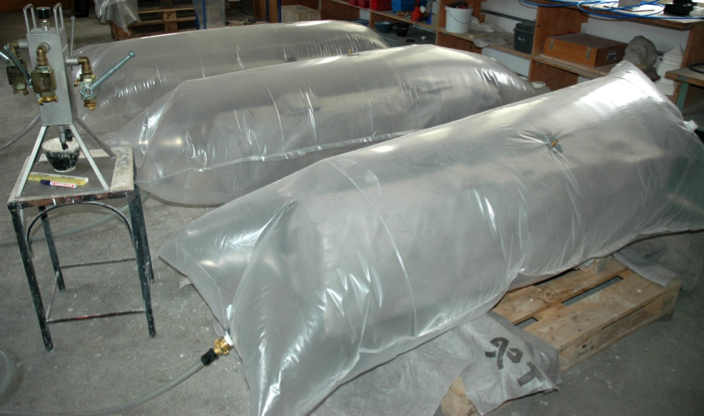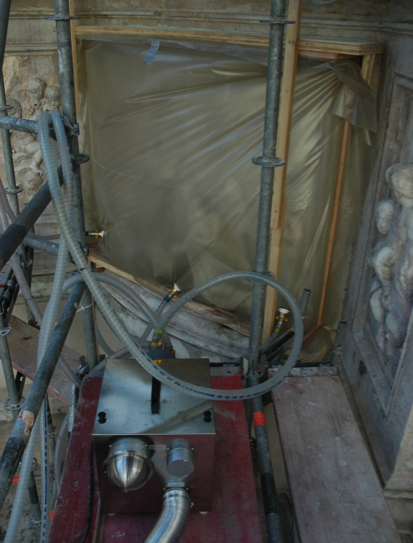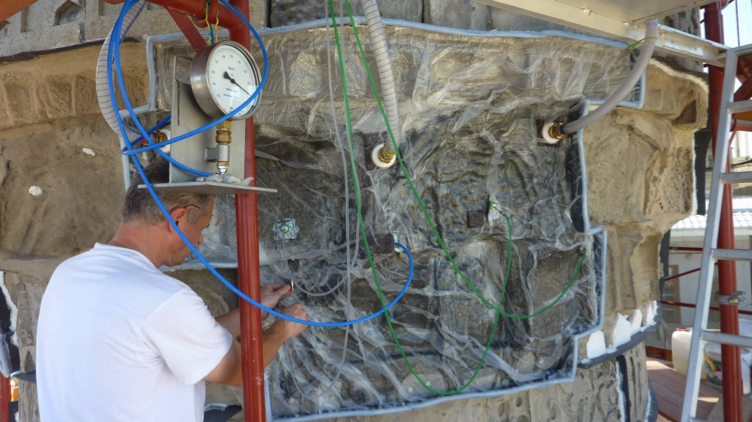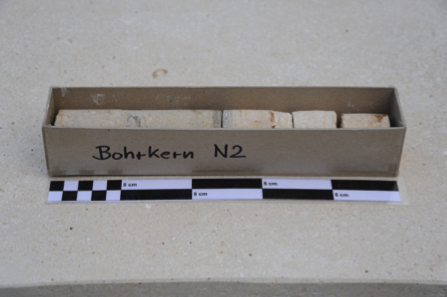Vacuum Conservation Method
(Europa Patent Erich Pummer GmbH no. 1295859)
- 1. VAC-diagram
- 2. Drying
- 3. Physical principles
- 4. Monument conservation on site
- 5. Treating previous restoration faults
- 6. Full impregnation
- 7. Desalination
- 8. Mobile use of the vacuum apparatus
The "Vacuum Circular Consolidation Method" (Europa patent no. 1295859, holder: Erich Pummer GmbH) provides the opportunity for conserving severely damaged monuments, stone sculptures, facades and other free-standing and/or weathered objects on site or in the studio.
This technology fulfils a basic principle of stone conservation that has been sought for decades, namely for new binding material to be added to the damaged object in sufficient quantity, and above all, to be conveyed deep into the stone. This requirement is of fundamental importance, as mere superficial treatments result in all too familiar damage; that is, the scaling of several millimetres, which splits after a few years, resulting in the original surfaces of the works of art to be irretrievably lost.
Scientific studies by domestic and foreign laboratories have verified its effectiveness. Therefore, the method has also been endorsed and prescribed by the Federal Monuments Office after suitable testing of the requirements.
In cases of insecurity or lack of financial resources to provide a necessary vacuum consolidation, we recommend going without any superficial strengthening treatment. The risk of creating consequential damages, which will cause high costs to solve in later interventions, is too high.
1. VAC-diagram
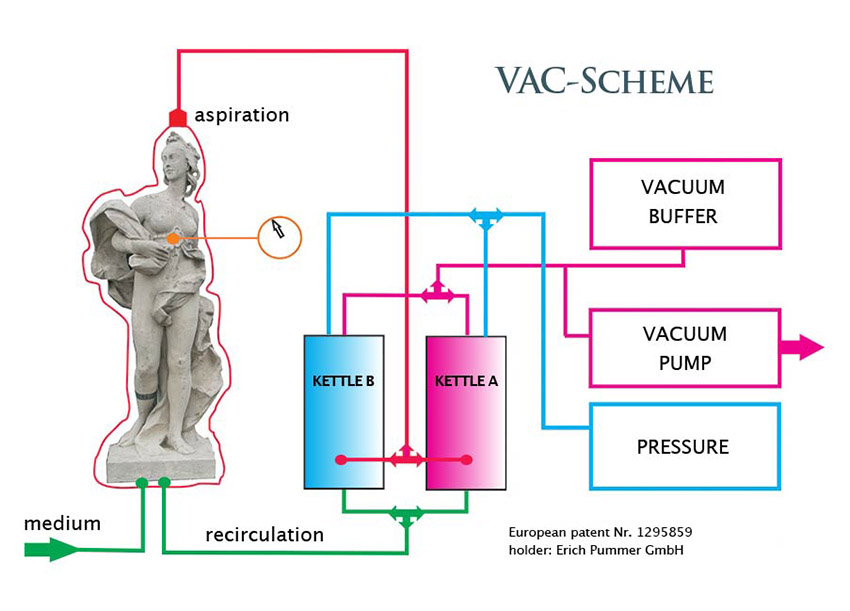
Functional diagram of the vacuum conservation technology
2. Drying
Where there is an increased humidity level in the stone to be consolidated, air dried to 20% humidity (130 m³ per hour) is blown into the foil bag using an absorption apparatus (DR130). This humidity-saturated air is then blown out again on the opposite side.
3. Physical principles
By employing the vacuum-conservation-method (VAC), we take advantage of a vacuum, or negative pressure – a condition of low pressure in a closed vessel. A vacuum prevails when the pressure of the medium surrounding a closed vessel is greater than the pressure inside the vessel.
In VAC-treatment, a quantity of porous material (natural stone) is shrink-wrapped airtight in foil or, in the case of in-situ conservation, sealed against the prevailing external pressure at its location.
At the subsequent evacuation of air from the foil bag, the foil is pressed in by the air pressure prevailing outside. Viewed from the opposite perspective, this occurs in the range of 0.1 to 0.9 bar vacuum. A pressure of up to 90 kg is exerted on a dm² surface of the foil or stone. However, as this pressure acts completely evenly from all sides, the object in the vacuum is not damaged in any way, provided that it is not hollow. For this reason, before the vacuum is created, cavities and undercuts in figures are stuffed with polypropylene fleece to support these areas.
When the negative pressure inside the foil (as read off the connected manometer) is sustained over a longer period, it can be assumed that all accessible capillaries and pores in the stone obtain this same pressure.
The equalization of the pressure difference is used to introduce a liquid medium into the object.
In our case, the valves for stone consolidation liquid are opened, which immediately penetrates into the pores and capillaries. In order to sustain the negative pressure, air is constantly suctioned via the vacuum pumps/buffer boiler until the entire accessible pore space is filled with stone strengthening agent.
Following the contact period required in this case, which we determined within the framework of an EU-sponsored research project (Culture 2000) for a variety of types of stone, the impregnation is complete.
It was revealed that large pores, cracks and notches are filled first and quickly, while small-pored and dense material absorbs less strengthening agent or none at all.
This is also related to the size of the molecular chains of the stone strengthening agent in relation to the pore radius of the stone located in the vacuum.
However, our work has shown very clearly that these physical limit values are extremely useful in the practical implementation of VAC stone conservation. After all, the aim is only to increase the strength of the stone structures weakened by weathering so that they match the strength of the undamaged material.
Increasing the consolidation of undamaged material could even be counterproductive if the consolidation curve is only shifted upward, causing stresses and the physical properties of the stone to change in the process.
Consistently weakened stones, which should be consolidated with silicic acid ester, are the exception here. This is because such cases almost exclusively involve highly-porous sandstones, which absorb a lot of stone strengthening agent, and which can also be strengthened in several application stages.
To avoid the problem of overlong reaction times or the SAE to leak and sag out of the consolidated object, modified silicic acid esters, especially for the vacuum circulation method and exclusively available for this application have been developped. These specialised SAE consist of two components, which are mixed shortly before application. This enables the reaction time to be controlled and the aforementioned problems to be resolved. In addition, the gel deposition rate (up to 45%) can be adapted to the porosity and absorption capacity of the stone to be consolidated.
Holy Trinity column Krems
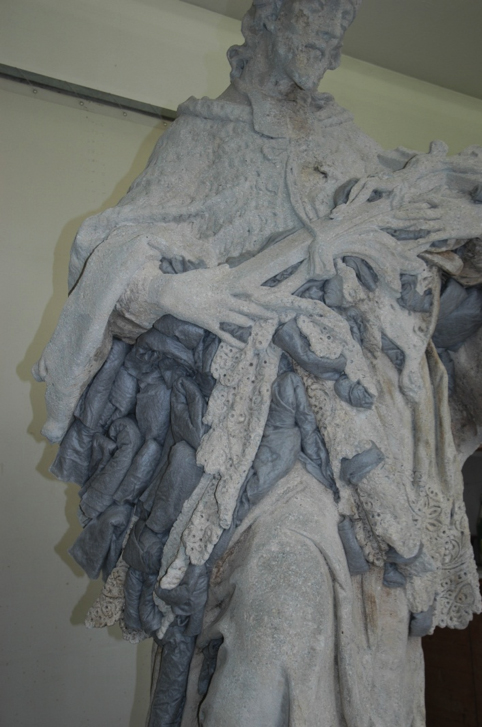
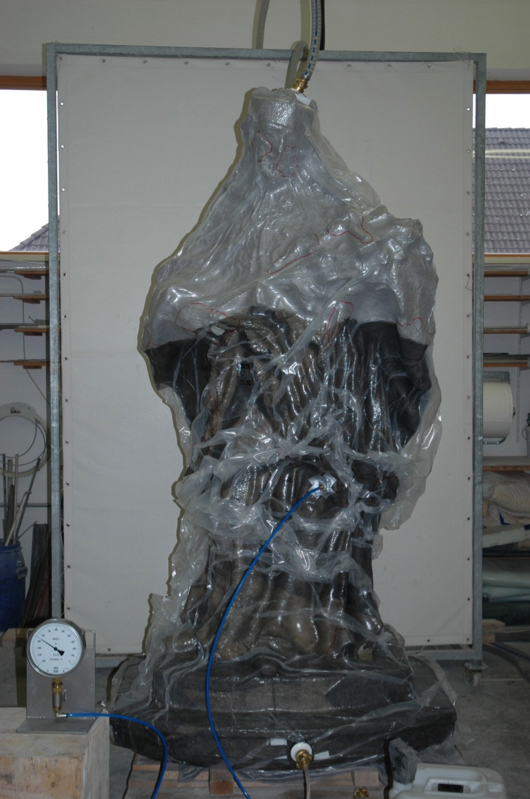
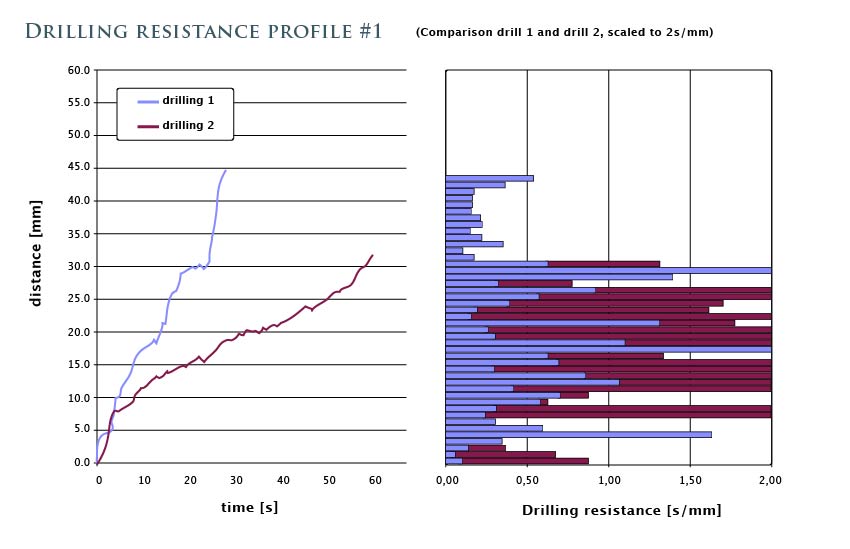
Example of a strength profile, Before-and-after measurements
Numerous measurements with drilling resistance technology and ultrasound verify the deep-reaching and even distribution of the strengthening materials in the pore structure of the stone.
4. Monument conservation on site
Mohammed Mosque in Baku, Azerbaijan, the minaret (11th century)
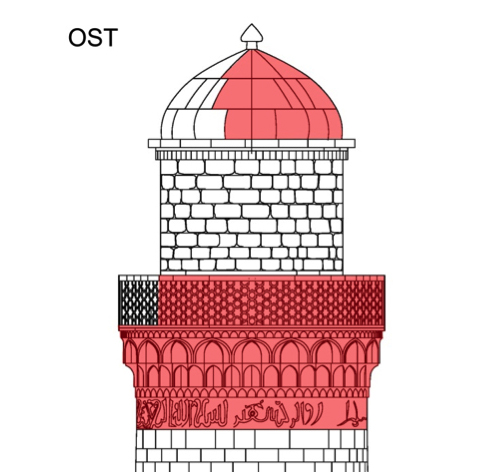
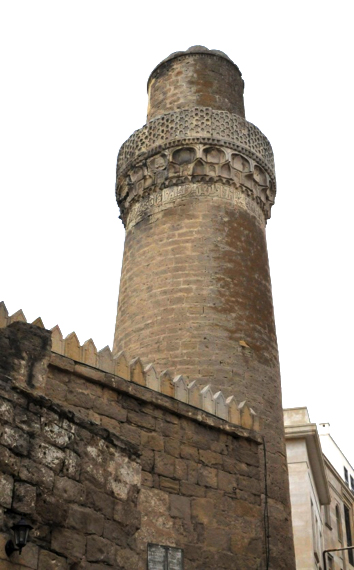
5. Treating previous restoration faults
In case of problems with stone surfaces that were over hardened or coated by earlier consolidations, but are crumbly in subjacent zones, the VAC-application can sometimes be the only solution. By means of the vacuum, hard outer crusts can be penetrated via the finest cracks and flaking damage, reaching and stabilizing the subjacent crumbly zones.
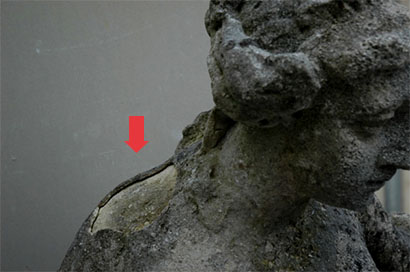
Baroque sculpture made of Zogelsdorfer lime sandstone
Classic damage as a result of an over-consolidated outer zone: A hard crust with a thickness of approx. 5 mm, which is scaling off the crumbling material underneath.
6. Full impregnation
For the restoration of fountain features or sculptures which are in constant contact with water (e.g. the Cascade Fountain in Belvedere Palace), the penetration of the stone with hydrophobing agents – including in combination with stone strengthening agents is a possible conservation measure, although this should be tested individually from case to case. Freeze/Thaw cycle test series performed on Zogelsdorfer lime sandstone pointed to the possibilities of increasing the frost resistance of the stone more than a hundredfold with a full impregnation.
It is very important that the object is completely dried before treatment is commenced. The foil wrapping for the subsequent consolidation can also be used effectively for this purpose.
Belvedere Cascade-Fountain, Nymphs
Statue, vacuum wrapped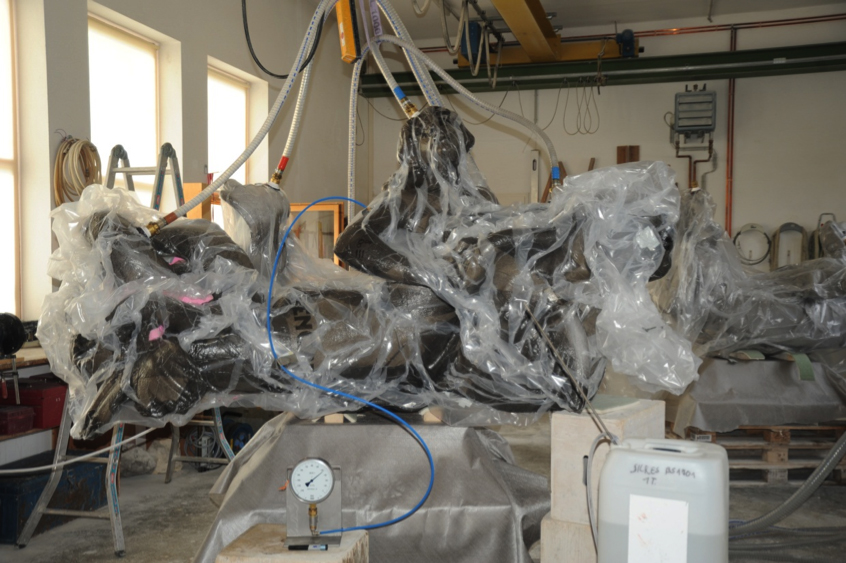
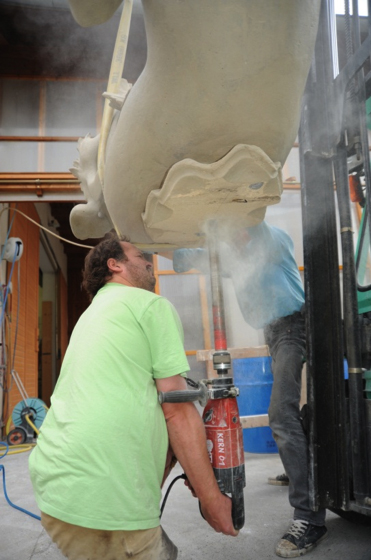
7. Desalination
The problem of stone decay caused by the deposition or crystallisation of soluble salts (nitrates, chlorides, sulphates) presents at least as great a challenge in stone conservation as stone consolidation.
Some stone objects contaminated with harmful salts have already been successfully desalinated using the VAC-method. The application procedure is very similar to that of stone strengthening agents in spite of the entirely contrary aim.
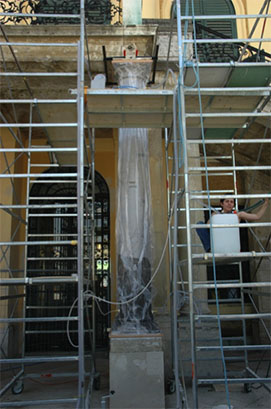
Schönbrunn Palace, Vienna, Column of the northern perron
The column is wrapped and sealed in foil and then rinsed with pure tap water. The water supply is applied alternately vertically, diagonally and horizontally to the column in order to partially dissolve and suction the salts in all areas. The suctioned water quantities are divided up and analysed at the site in numerous stages (Merckoquant test sticks). The salt concentration values initially rise from test to test, but then decrease significantly after over 20 hours of rinsing. In the course of the subsequent air-drying, cellulose compresses are also applied to extract the residual salts emerging with the drying. The absorption drying procedure, as described above, would also be an option here.
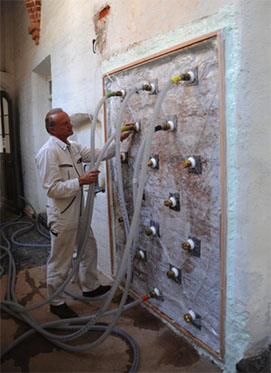
Johannis monastery, Stralsund, Mecklenburg Vorpommern, Germany
Desalination of brick walls, intensively contaminated, over the full cross section. The 50 cm thick wall got sealed on the front side by special plastic film, which afterwards enables negative pressure on it. On the opposite, or backside, of the wall clear water gets pressed into drilled injection valves. After 6 days of continuously flushing about 2500 liters of water, it was possible to proof the reduction of solved salts inside the extracted water with Merckoquant test sticks and measure electric conductivity.
The precondition of the permanent success of the desalination is to seal the foundation and bordering walls against penetrating water.
8. Mobile use of the vacuum apparatus
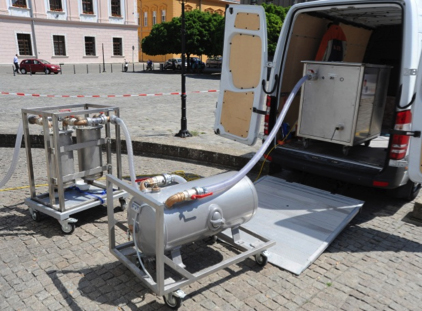
The VAC-apparatus was constructed from modules to be compact but flexible. It can be transported in a pickup and can thus be used anywhere.
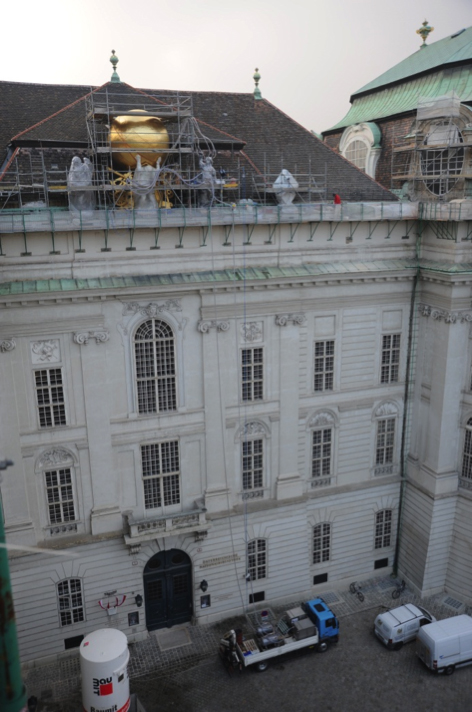
The National Library in Vienna
In the case of larger objects, such as the 3-metre tall Attic sculptures, two apparatuses are coupled together; in this case positioned on the truck 30 m below the sculptures to be consolidated.
